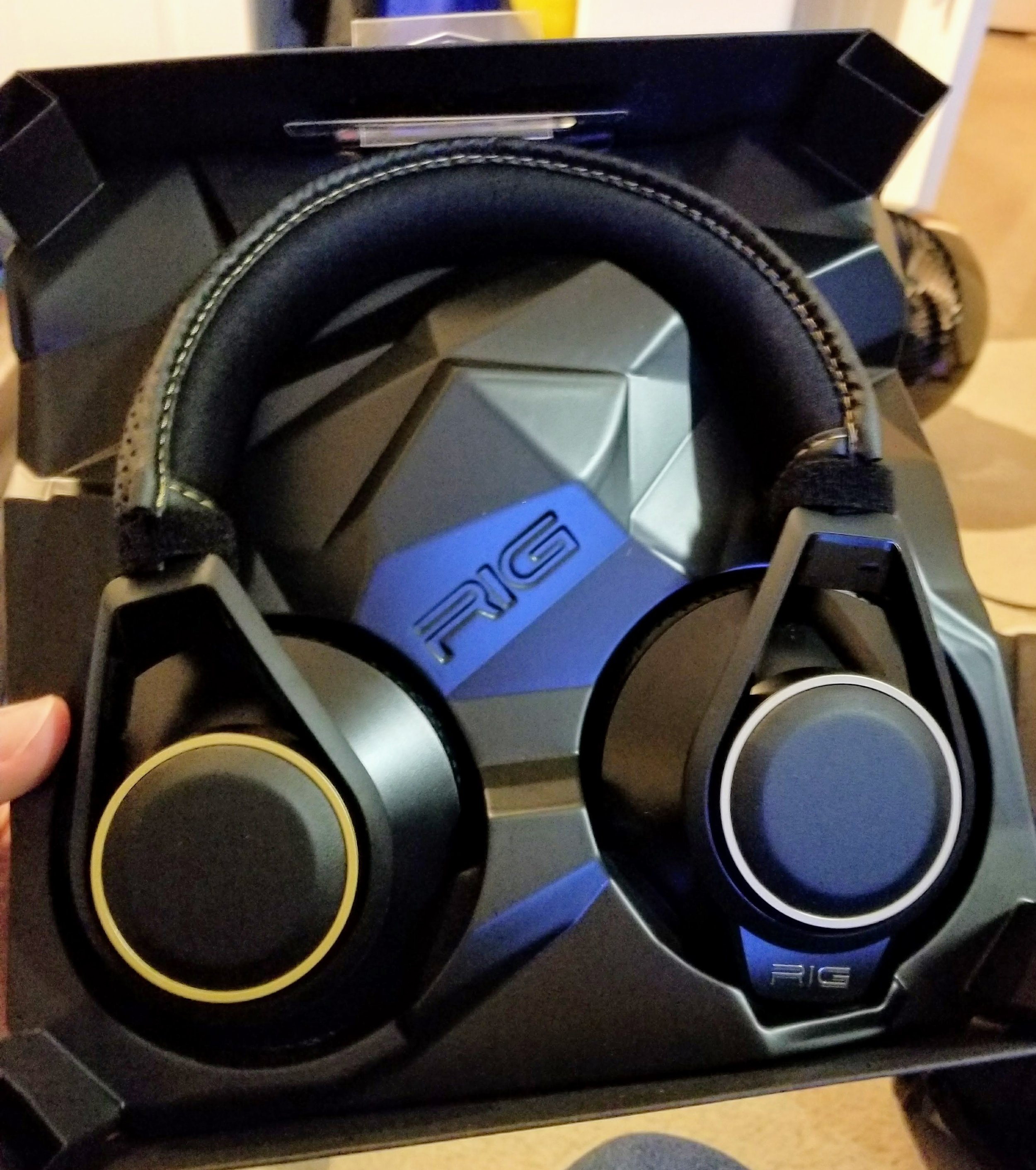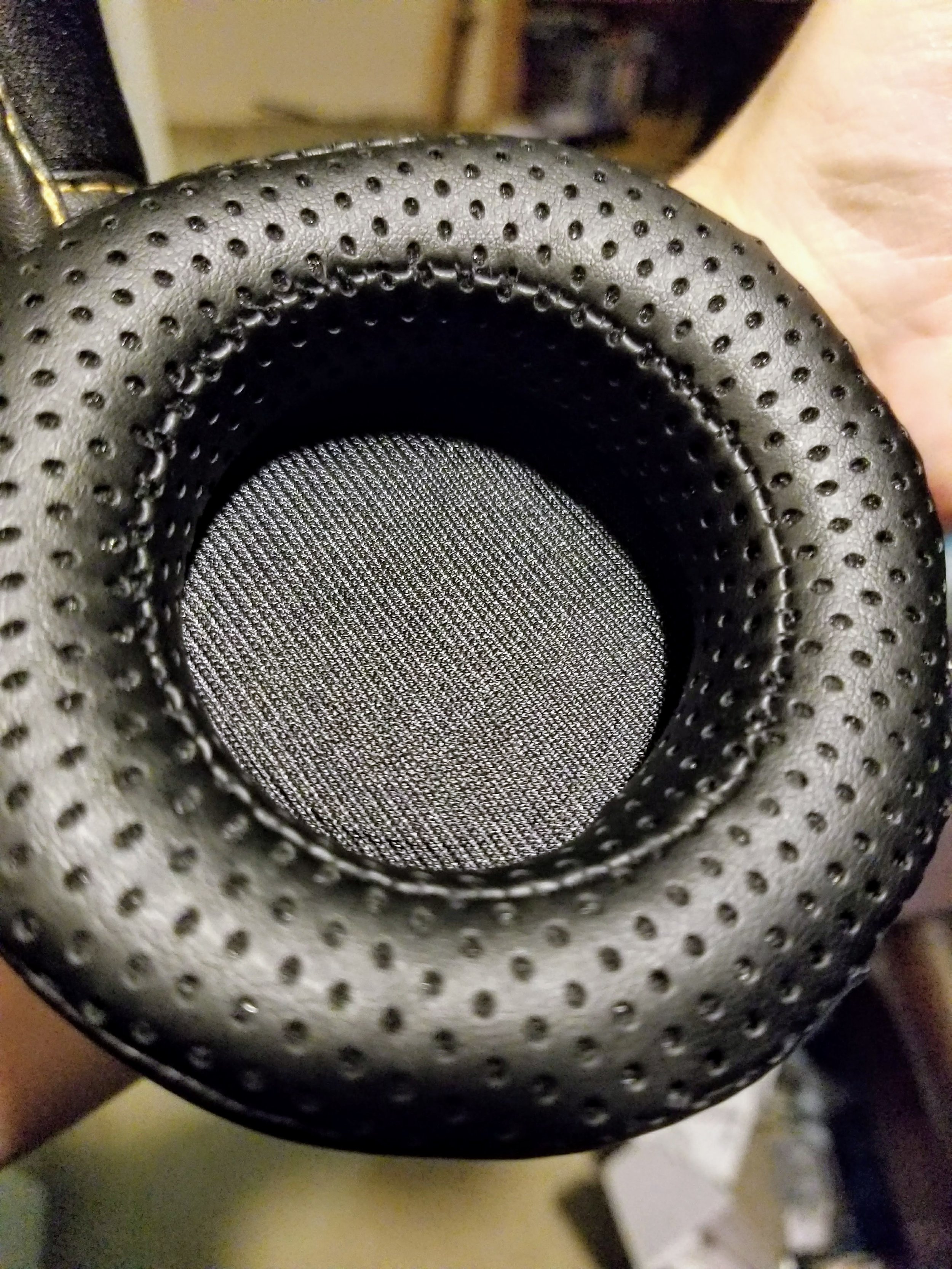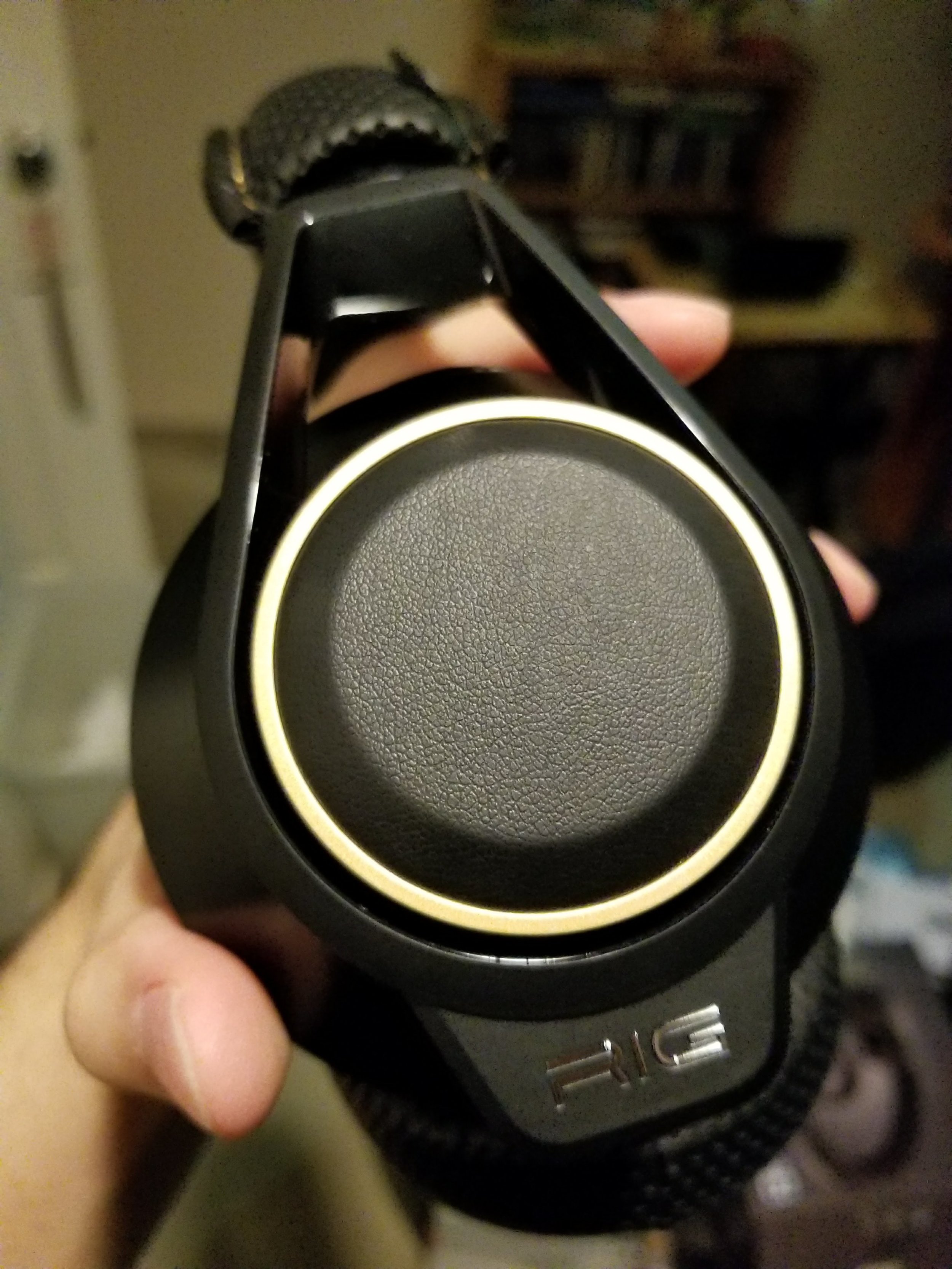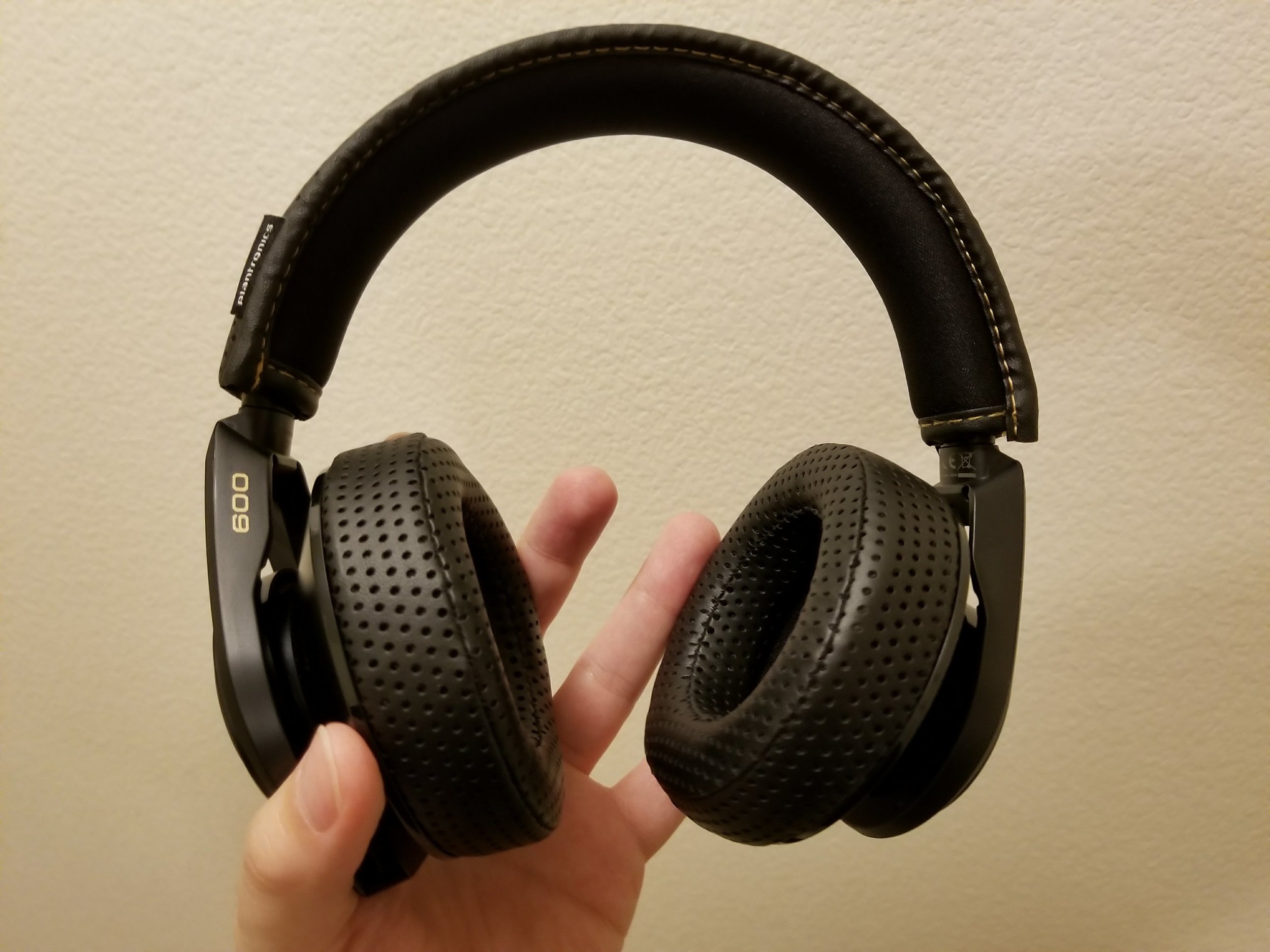Plantronics RIG 600 Gaming Headset Review with Mic Tests
Sometimes as I'm walking through a Best Buy, I see an audio product I don't expect to find there, and BAM here we are.
I already enjoyed the RIG 400 and the RIG 800...how does the middle one fair?
OVERVIEW
The Plantronics RIG 600 is a $99 closed-back wired gaming headset with multi-platform compatibility, thanks in part to a selection of two different cables. It's not a new design. In fact, the model that's currently available is the third revision. It originally launched as the Rig Flex, and then it relaunched a couple of years ago as the RIG 600.
This time out, it just got a light refresh, with new branding and new bundles that include free Dolby Atmos codes.
Although it doesn't have the modular, angular design of the other RIG series headsets, it still maintains some of that flavor within the packaging. The tray that it comes in is a weird, hilariously angular mountainous thing. But other than that one bit of strange flair, the packaging is tasteful, and includes the headset and two detachable cables. One cable has a boom microphone on it, and the other has an inline mic for cell phone use. So you should be covered no matter where you want to use this.
Why would Plantronics keep recycling this older design? Turns out they had some good reasons to...but there's also some room for improvement.
SOUND QUALITY
Like the two other Plantronics gaming headsets I've reviewed in the past, the RIG 600 offers impressive sound performance for the price.
The $99 price point offers some serious competition. On the gaming side, you have performers like the HyperX Cloud Alpha, the Steelseries Arctis 5, and the Logitech G433. In standard headphones, there's the Pioneer DJ HRM-5, the Audio-Technica M40X, the new Beyerdynamic DT240, the Sony MDR-7506, and about a million others.
Fortunately, the RIG 600 holds its own, sonically.
Unlike most other audio companies, Plantronics actually publishes frequency response graphs for their headphones right on the back of the box.
This graph seems accurate, to me. You'll notice that there's a notch in the upper mids/low treble, and that helps to lower fatigue. If that bothers you, be advised. It gives these a little bit more of a v-shape than they might otherwise have had, but I still find the overall balance pleasing.
You might have noticed how smooth the bass response is in that graph. The bass quality is the most impressive thing about these. It's similar in character to the Cloud Alpha and a touch better than the bass response on the Arctis. The Arctis has a slight emphasis in the mid bass that occasionally makes things sound a little dark down there, but the RIG 600 has a clarity and separation to all of its bass frequencies that's really cool.
The Cloud Alpha achieved this separation effect through a dual chamber venting system behind the driver. Plantronics gets there with passive frequency resonators. Essentially, there's an additional membrane inside each cup that doesn't have any kind of active sound signal going into it. It's just there to vibrate with air when low frequencies are happening in the main driver, and help give them a gentle boost and slam. It's a technique that a lot of full-size speakers use.
The result is impressive, impactful, accurate, natural bass. The decay is nice and quick, and nothing about the bass muddies up the mids at all. It just hangs out down there doing its thing, and I like it.
The rest of the frequencies are also good, even if they don't have quite the clean tone that the bass does. The mids are nice with accurate voices and no hollow/cupped issues, and the highs ring out without too much grain or artificial detail.
Plantronics always does well tuning sound signatures, and the RIG 600 is no exception.
Soundstage is wider than I expected for the design, with pleasant imaging and separation. That's important in a gaming headphone, and gives these an advantage over some of the more intimate studio pairs that sometimes get recommended online.
The right ear cup has a big R in it, similar to other RIG headsets. It's the only garish thing about the design.
ISOLATION
Okay. Ugh.
We need to talk about the isolation here.
There's almost none, relatively-speaking.
It's the most disappointing thing about these, depending on your needs.
The RIG 600 comes with "Sound Isolating Ear Cups." The pads are made from leatherette...but they have lots of little venting holes in them. These holes allow the headphones to breathe, reducing sweat build-up around your ears over long gaming sessions.
These holes also mean that they don't isolate as well as any of the headphones I listed in the overview above. In fact, the RIG 600's perform in line with what I'd expect from a "semi-open" pair of headphones. The back of the cup may be closed, but the front is definitely open to outside interference.
I understand that preventing sweat build-up is important. I understand that the openness of the pads helps with the soundstage. But man. Calling these sound isolating cups is kind of a disservice to the term.
Is the isolation a complete deal-breaker? No. They still barely worked during my usual loud coffee shop test, but not as well as many other pairs I've tried. The impressive bass response helps block outside noise, but you'll be much more aware of your surroundings than you would be with most competing pairs. They also leak a little bit more than all of the pairs listed above.
Compared to the RIG 400 and 800's cloth ear cups, I can't even say I liked the isolation performance here better. Crazy right? They don't put you in a private cocoon of sound the way some other closed headphones do.
These are great for using around the house, at a small LAN Party, or even probably for walking around your neighborhood, since you'll still be aware of your surroundings. But they're a bad office/coffee shop/eSports Tournament headset.
COMFORT
Fortunately, the comfort of the RIG 600's is exceptional.
Even though the ear pads are round, their foam is quite flexible and there's plenty of room inside, meaning they shouldn't have much trouble fitting around your ears. The headband is nicely padded too.
Clamp is a little bit higher than I was expecting, meaning they're a touch more noticeable on the head than the other modular RIG headsets, but the light weight and pleasant padding help offset this.
These are easily wearable for hours on end, no problem.
These have a wide range of adjustment. They also fold flat but don't collapse at all.
DESIGN/BUILD
It's frustrating that the RIG 600's carry the RIG branding, as they aren't modular like most of the other headsets in the lineup. I guess that's due in part to the fact that this is an older design...but much of the fun of the RIG line is that you can replace all the parts.
The 600 has a similar design language, but the only thing you can replace is the cable. Plantronics doesn't sell replacement pads or frames for this one. That's disappointing.
But then, I've also wondered how many people even take advantage of that?
Outside of my disappointment with the near-total lack of modularity, the design of these is nice. They're a subtle-looking headset, trimmed mostly in black with a few light gold accents. The backs of the ear cups are covered in a nice leatherette, and the stitching along the headband gives them an expensive look. They don't have any of the sharp angles or garish visual features that 99 percent of modern gaming headsets feature, which is cool.
You can wear these out in public without feeling ridiculous. They curve nicely to the head and nothing about them screams at nearby people...except the possible leak if you listen at anything above a low volume. Sigh.
Build Quality is right in line with what I expect for 99 bucks. Most of the parts are plastic, and the forks that hold the cups in place are a touch creaky and a touch thin...but overall, it feels like a good compromise between light weight and solid parts. It feels like the headband is metal reinforced, but I didn't rip the thing open to double-check.
The adjustment sliders have a good sharp metallic click to them, and they have 16 clicks of adjustment, making these some of the most-adjustable gaming headphones I've ever seen. On my large head, I have a few extra clicks so most people should be good here.
I hope you like big rubbery bits on your cables!
MIC TESTS/FEATURES/EXTRAS
The cable is removable and you get two in the box. One has an inline microphone, mute switch, and play/pause button for phones, and the other one has a boom microphone and an inline volume control and mute switch. There's also a splitter if you want to use this on a PC with separate Mic/Headphone jacks.
Between these two cables, you should be set for just about any wired platform you'd want to use these on. The boom mic works well on PC and the modern consoles. Here's mic tests of both microphones that I recorded straight into Audacity on my Macbook.
Both microphones are good. The boom mic has a slightly tinny quality to it, because it's probably tuned to make the vocal region pop a little bit. The inline mic seems like it'd be fine for phone calls, and it'd have a better sound if you really get close to it...but I wanted to show what it's like at a normal position.
The design of these cables is hilarious.
The cord parts are good. They're made of a nice flexible material, and they're flat. They seem pretty tangle resistant and they're very easy to travel around with.
But the plugs and the inline controls are contained in comical amounts of rubber.
Seriously, whoever designed these plugs and controls must have really loved boxy rubber? I guess? The plugs are giant and non-angled. The controls are contained in giant rectangles of thick rubber.
It's the one most-obvious sign that these were first created a number of years ago. A modern gaming headset would have far less rubber surrounding these controls.
I like the way that the headset end of the cable inserts into the back of the ear cup at an angle. This helps with strain relief, and means that the cable falls correctly in front of your shoulder.
FINAL THOUGHTS
The RIG 600 has very good sound and mic performance, a nice subtle design, and solid build for the price. But the cups don't isolate much at all and it doesn't have the fun modular design of other RIG models. And the cables have lots of superfluous rubber.
Those might not seem like the biggest missteps, and they aren't...but the market is extremely crowded.
The inclusion of a Dolby Atmos code in the newer refresh makes these an okay value...but honestly, you're probably better off with the RIG 400 or the RIG 800. Or any of the many other good $99 headsets out there. There's no denying that their sound performance is great and I like their design... but there's so many other good choices out there right now.
The 600 fades a little bit into the pile of choices, and is only a great pic for those that fall in love with its specific design.
With more isolation and replaceable pads, these would be a no-brainer recommendation from me. I'll keep them around just for their clean bass performance, but they might spend more time in my closet than my other headsets.














